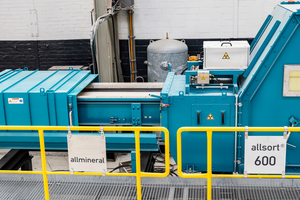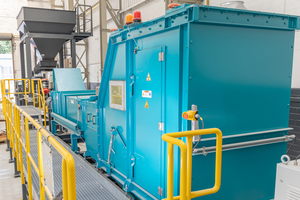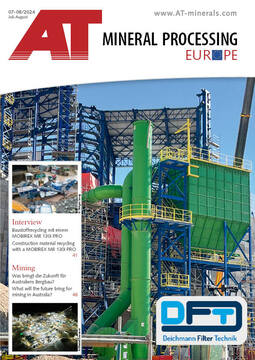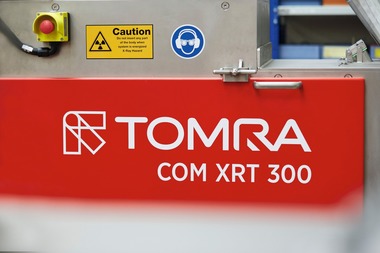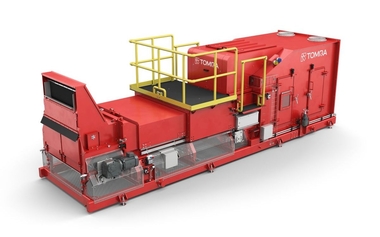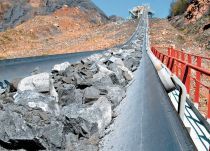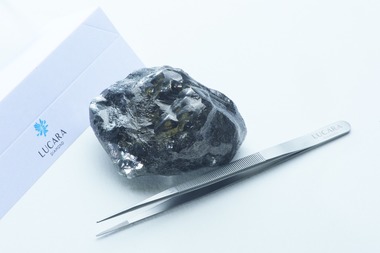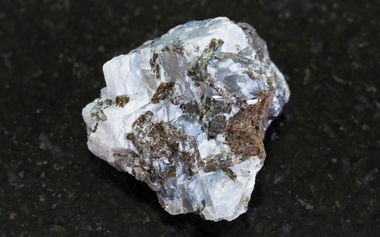Use of allsort® XRT sorters and allair® air jigs from allmineral
Dry processing offers a promising alternative to conventional wet processing. It significantly reduces water consumption and minimizes the environmental impact. Two outstanding technologies in this area are XRT sorting (X-ray transmission) and air jigging machines from allmineral. These technologies enable ores to be processed efficiently and in a way that uses resources economically by working precisely and in line with requirements.
XRT sorting uses X-ray technology to determine the material density and composition of the ores, thus ensuring precise sorting. On the other hand, allmineral’s air jigging machines use air flow that mimic the conventional wet jigging process through pulsations, where constant airflow helps to separate particles based on their density differences. In combination, these technologies enable an optimum adaptation of the treatment processes, which not only increase efficiency but also reduce costs and minimize environmental impact.
The unique features and benefits of allmineral’s XRT sorters and air jiggs demonstrate how the data generated by XRT technology can be used to control the process to further increase efficiency and maximize yield.
X-ray Transmission Technology (XRT)
X-ray transmission technology (XRT) has attracted considerable attention in both mining and recycling in recent years. It represents an innovative method for sorting materials based on physical properties, thus increasing efficiency and profitability in both areas.
XRT uses X-ray to analyze the density and atomic composition of materials. An X-ray beam is sent through the material to be analyzed. On the opposite side of the material there are detectors that measure the intensity of the transmitted X-ray. Different materials absorb X-ray on different levels, which leads to varying intensities on the detectors. By analyzing these intensities, the material composition and density can be determined.
XRT-Technology in Mining
XRT is mainly used for ore sorting. Traditional methods of ore sorting, such as gravimetric separation or gravity sorting, are often resource-intensive. XRT enables a more precise and faster separation of ore and overburden (waste rock).
Precise sorting minimizes the extraction of unusable materials. This not only reduces energy and water consumption, but also the amount of overburden that has to be treated and discarded. Pre-sorting also ensures that homogeneous material is fed into the downstream processing plant. This makes it possible to eliminate the need for a blending yard in certaing processes.
The reduction of overburden and the efficient use of resources help to reduce the environmental impact of mining. Less overburden means less land use, smaller tailing storage facilities and less pollution.
XRT-Technology in Recycling
In recycling, XRT is used to separate different types of metals from each other. This is particularly useful in the reprocessing of electronic waste, where metals such as copper, aluminum and precious metals need to be separated from each other. XRT can also be used to separate plastics according to their density differences. This improves the quality of the recycled material and increases the efficiency of the recycling process. In glass recycling, XRT can be used to remove impurities such as ceramic or stone from the glass stream, increasing the purity and quality of the recycled glass.
Advantages of XRT technology
Increased efficiency: Thanks to precise sorting, high-quality materials can be recovered more quickly and efficiently. This leads to a higher yield and better cost-effectiveness.
Cost savings: The reduction of waste and the more efficient use of resources lead to lower operating costs.
Sustainability: The more environmentally friendly way of working contributes to sustainability and helps to fulfill environmental and social responsibilities.
Developments
Future developments are aimed at reducing costs and further improving technology. Automation and digitalization play one of the most important roles in further increasing efficiency and user-friendliness.
In the world, current X-ray transmission sorting (XRT) technologies generate a significant amount of data. This data is the result of the precise analysis of materials going through the sorting process. Surprisingly, much of this data often remains unused and is simply discarded. However, there is enormous potential in this mass of information that remains untapped.
At the heart of these sorting technologies is the ability to analyze and evaluate each scanned particle. Pre-defined criteria are used to determine whether or not the material meets the required product specifications. These criteria can vary depending on the requirements of the application. It could be material composition, size, density or other characteristics that are critical for quality assurance. As soon as the system identifies a particle as not meeting the specifications, it is discharged from the main stream with precision. This is done using highly developed compressed air systems that specifically remove the unwanted material without affecting the sorting process.
However, the potential of XRT sorting technologies lies not only in the precise sorting itself, but also in the analysis and utilization of the data generated. This data can be used to further optimize the performance of the system and the overall process control as well as to derive findings for further required process steps.
A particularly good example of the importance of data analysis in XRT sorting technologies can be found in ore sorting. Here, particles are often rejected as waste rock because their metal content does not meet the specifications. However, a closer look at these rejected particles often reveals an interesting aspect: the required degree of liberation could be achieved by further comminution. This could lead to maximum recovery of the valuable metal by adapting the comminution stage to the current conditions beforehand or by labeling the scrap material as middlings and enriching it using allair® air jigging machines after further comminution.
This illustrates the enormous importance of comprehensive data analysis in XRT sorting technologies. It is not only a question of efficiency and cost-effectiveness, but also of sustainability and resource savings. By using the data generated to continuously improve the sorting process, we can not only increase the performance of the technology, but also make a positive contribution to saving natural resources.
It is time to start using the immense amount of data generated by XRT sorting technologies as a valuable resource for the optimization of the process and further development of these technologies. XRT technology represents a significant innovation in both mining and recycling areas. Thanks to its ability to sort materials precisely according to their physical properties, it makes a significant contribution to increasing efficiency and sustainability in both areas.

